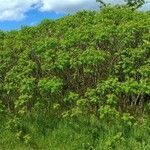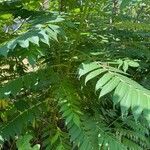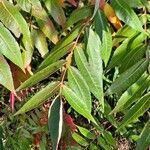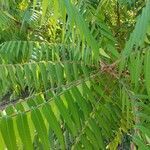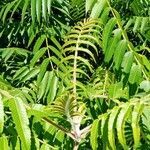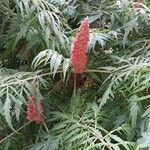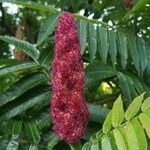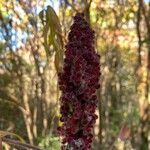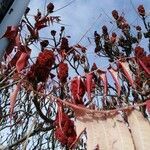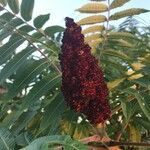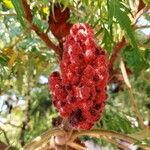Deciduous shrub or small tree to c. 8 m high, often suckering extensively. Branchlets villous. Lvs pinnate, with 19-23 leaflets in mature plants, up to c. 30 cm long; petiole and rachis villous or densely hairy, the hairs purple when young. Leaflets sessile, 4-12 × 0.8-2.5 cm, oblong-lanceolate (terminal leaflet ± ovate), glabrate except for densely hairy midrib below, glaucous below, dull green above, serrate, acuminate at apex, becoming orange to crimson in autumn. Infl. terminal, villous, dense and conelike, to c. 20 × 5 cm. Fls greenish. Calyx segments lanceolate, long-ciliate. Petals 2-2.5 mm long. Fr. c. 3 mm wide, broader than long, villous with long rose to crimson hairs.
Tall shrub or small tree to 10 m; younger branches, petioles, and lf-rachis densely and softly hirsute; lfls 9–29, lanceolate to narrowly oblong, 5–12 cm, acuminate, serrate, paler beneath; frs 4–5 mm, somewhat flattened, red, densely covered with slender, tapering hairs 1–2 mm. Dry, open places; N.S. and s. Que. to Minn., s. to W.Va. and O., and irregularly to n. Ga., n. Ala., and Io. June, July. (R. hirta)

